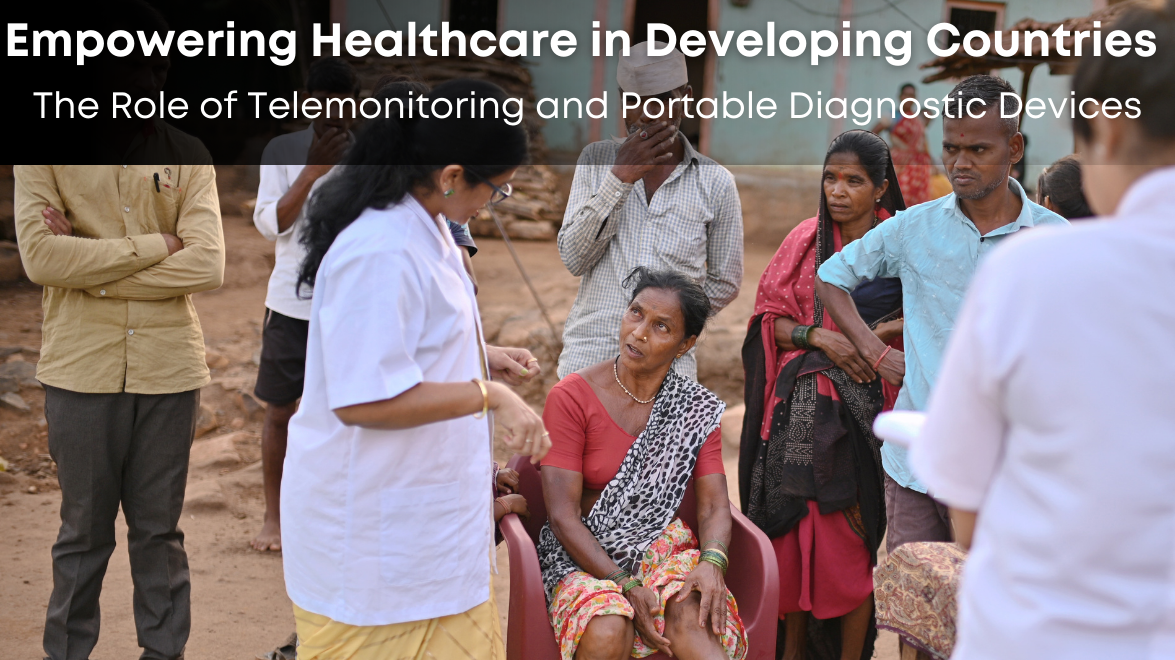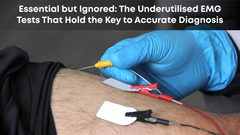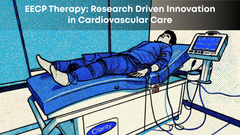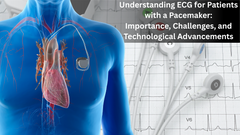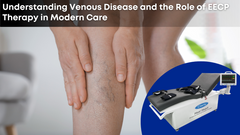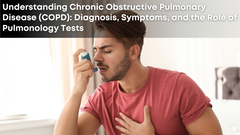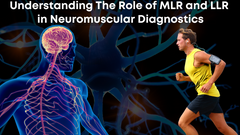Empowering Healthcare in Developing Countries: The Role of Telemonitoring and Portable Diagnostic Devices
In many developing countries, healthcare systems face significant challenges: limited access to medical facilities, a shortage of healthcare professionals, and inadequate infrastructure. With growing populations and increasing rates of chronic diseases, the demand for quality healthcare continues to rise. Telemonitoring and portable diagnostic devices are now emerging as powerful tools to bridge healthcare gaps, transforming patient care in resource-limited settings and strengthening healthcare structures.
The Challenge: Access and Infrastructure Gaps
Developing countries often have limited healthcare access, especially in rural and remote areas where a lack of transportation, inadequate medical facilities, and a shortage of trained personnel can make receiving timely medical attention difficult. Urban centers may have hospitals and clinics, but these facilities are often overburdened, resulting in long waiting times and reduced quality of care. Additionally, healthcare expenses in such regions can strain patients and their families, especially where insurance coverage is limited or unavailable.
For these reasons, there is a critical need for innovations that offer:
> Increased accessibility to medical services.
> Cost-effective solutions that reduce the financial burden on patients.
> Efficient management of chronic diseases and follow-up care.
The Promise of Telemonitoring in Developing Countries
Telemonitoring enables healthcare providers to remotely track patients' health data, monitor chronic conditions, and provide timely interventions, all without requiring patients to travel to a healthcare facility. By leveraging mobile networks and digital devices, telemonitoring can extend medical services to remote areas, empower patients to take charge of their health, and streamline care for chronic disease management.
> Remote Access to Quality Healthcare
Telemonitoring allows healthcare providers to remotely monitor patients' vital signs, detect anomalies, and intervene promptly when necessary. For patients in rural regions, telemonitoring is a breakthrough, as it enables them to receive expert medical advice without leaving their communities. This is particularly useful for managing chronic diseases like diabetes, hypertension, and cardiovascular conditions, which require ongoing monitoring.
> Lowering Healthcare Costs
In many developing countries, hospital visits can be a substantial financial burden for patients. Telemonitoring reduces the need for frequent in-person appointments, enabling patients to receive care in the comfort of their homes. This translates into lower transportation costs, fewer lost workdays, and reduced out-of-pocket expenses for hospital visits.
> Addressing the Healthcare Workforce Shortage
The shortage of healthcare professionals is a significant challenge in developing countries. Telemonitoring helps to alleviate this issue by enabling one healthcare provider to monitor and manage multiple patients remotely.
The Role of Portable Diagnostic Devices
Portable diagnostic devices such as portable ECG, EMG, EEG, ultrasound devices, spirometers, and blood glucose monitors allow healthcare workers to conduct essential tests in any location, making healthcare services more accessible and responsive.
> On-the-Go Diagnosis and Treatment
Portable diagnostic devices allow healthcare providers to conduct tests and diagnose conditions right at the point of care, even in the most remote areas. In situations where traditional, large diagnostic machines are not feasible, portable devices provide a viable alternative, bringing crucial diagnostics to the patient instead of requiring patients to travel to distant facilities.
> Managing Infectious Diseases
In regions prone to infectious diseases, portable diagnostic devices can support rapid testing and diagnosis, helping healthcare workers identify and contain outbreaks early. Portable diagnostic tools can test for diseases such as malaria, HIV, and tuberculosis right in the field, enabling healthcare workers to begin treatment immediately and prevent further spread.
How Clarity Medical’s Solutions Fit Perfectly into This Scenario
As healthcare needs expand, Clarity Medical's Recobro and a suite of portable diagnostic devices, including portable EEG, EMG, and ECG are providing the tools to overcome some of the toughest challenges in these areas.
Clarity Medical’s Recobro: Real-Time Patient Monitoring
Clarity Medical’s Recobro is a portable patient monitor equipped with real-time telemonitoring capabilities. It continuously tracks essential vitals such as heart rate, blood pressure, oxygen saturation, and transmits this data in real-time to healthcare providers. This capability is transformative for rural and underserved areas in developing countries, where the nearest medical facility might be hours away.
Reducing Emergency Response Time: With real-time data transmission, healthcare providers can make swift decisions and prepare for emergency care if needed before the patient even arrives at a facility.
Managing Chronic Conditions: Recobro empowers patients with chronic conditions to share their health status from anywhere and enables healthcare providers to monitor these patients remotely, reducing the need for frequent hospital visits.
Clarity Medical’s Portable EEG, EMG, and ECG Devices: On-Site Diagnostics Anytime, Anywhere
Clarity Medical’s portable EEG, EMG, and ECG devices are engineered to bring crucial diagnostics to the point of care. By enabling healthcare workers to perform these tests on-site, these devices allow for faster diagnosis, timely interventions, and effective follow-up care.
> EEG for Neurological Health: Clarity’s portable EEG systems help diagnose neurological disorders such as epilepsy and monitor brain health, even in resource-limited settings where traditional EEG machines might be unavailable.
> EMG for Muscular Diagnostics: Portable EMG enables the detection of neuromuscular conditions and guides physical therapy in rural settings, which would otherwise lack such specialized equipment.
> ECG for Cardiovascular Monitoring: Clarity’s portable ECG systems allow quick and accurate assessment of heart health, a vital need in regions with high rates of cardiovascular diseases. These systems are invaluable in emergencies and routine check-ups, providing accurate data for rapid decision-making.

Key Benefits of Telemonitoring and Portable Diagnostics for Developing Countries
> Scalability and Cost-Effectiveness
Both telemonitoring and portable diagnostic devices are scalable solutions that can be implemented at various levels of the healthcare system. They don’t require significant infrastructure investments and can be adapted to meet the needs of different regions. This makes them a cost-effective solution for governments and healthcare providers in developing countries, allowing them to extend their services without substantial costs.
> Empowering Community Health Workers
With the support of Recobro and portable diagnostic tools, community health workers (CHWs) can offer a broader range of services, including vital sign monitoring, diagnostics, and health education. These technologies equip CHWs to provide higher-quality care and build trust within the communities they serve.
> Enhanced Data Collection and Decision-Making
Telemonitoring and portable diagnostic devices enable continuous data collection, which can be stored, analyzed, and shared in real-time. This data helps healthcare providers identify trends, track disease patterns, and make informed decisions. It also supports governments and healthcare organizations in resource allocation and planning, leading to a more resilient healthcare infrastructure.
Conclusion
Clarity Medical’s Recobro and its portable EEG, EMG, and ECG devices represent the future of healthcare in developing countries, where access to high-quality diagnostics and monitoring can be limited. These devices bring essential healthcare services closer to patients, enable more efficient use of healthcare resources, and improve health outcomes across diverse communities. By leveraging these technologies, developing countries can create more responsive, equitable, and effective healthcare systems for millions of people in need.


